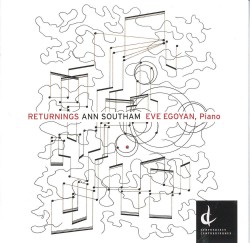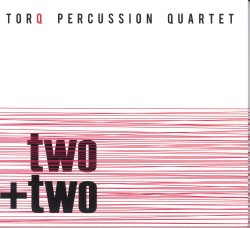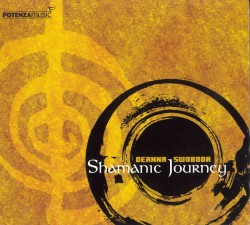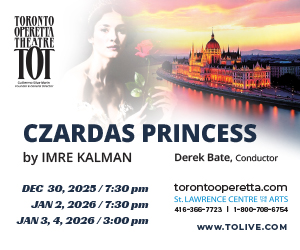Southam - Returnings - Eve Egoyan
 Southam - Returnings
Southam - Returnings
Eve Egoyan
Centrediscs CMCCD 17211
This album marks the premiere recording of four piano works by the late Ann Southam. The music was chosen by Southam, among Canada’s finest composers, who died at age 73 in November 2010. The consummate Toronto pianist Eve Egoyan, for whom the works were created, makes a convincing and moving case for them.
I first heard Southam’s music in the 1970s when she became known for the electroacoustic works she made for Toronto Dance Theatre choreographers. I was surprised to hear later that we shared a mutual composition teacher, Samuel Dolin of the Royal Conservatory of Music. In Returnings I, the piano tolls in the low register while the consonant mid-keyboard chords support a disjunct melodic line. The haunting, though reassuring, music is over well before I want it to be. It hardly seems to last the quarter of an hour the CD timing states.
In Retrospect is like a broken harmonic series rearranged, a set of cubist impressions of bells ringing, their pitches ranging over most of the keyboard. One can imagine in the listening Southam’s abstracted, distanced and terse life in review, fastidious in its avoidance of dramatic overstatement and emotional sturm und drang. While her modernist colours are on display here, by the end of the work I am left with the feeling of unquiet, unnamed musical questions being posed rather than clear statements articulated and argued.
Qualities of Consonance, in contrast, has a dramatic agenda. It serves up dissonant, aggressive, loud musical gestures that would be quite at home in the mid-20th century, alternating with soft sostenuto passages. The resulting dialectic resonates on a deep emotional level. In the final work, Returnings II: A Meditation, Southam offers us a more refined aesthetic. Set in a haltingly rocking rhythm, it revisits the harmonic grammar of Returnings I.
Yes, I hear links in these last piano pieces to the more pattern-concerned jubilant minimalism of Southam’s earlier works, yet this mature autumnal music speaks to me with more conviction. They have the admirable gravitas and serenity of a full life well lived. These pieces, along with Southam’s Simple Lines of Enquiry (recorded by Egoyan on Centrediscs CMCCD 14609), should take their rightful place in the top tier of contemporary concert piano repertoire.







